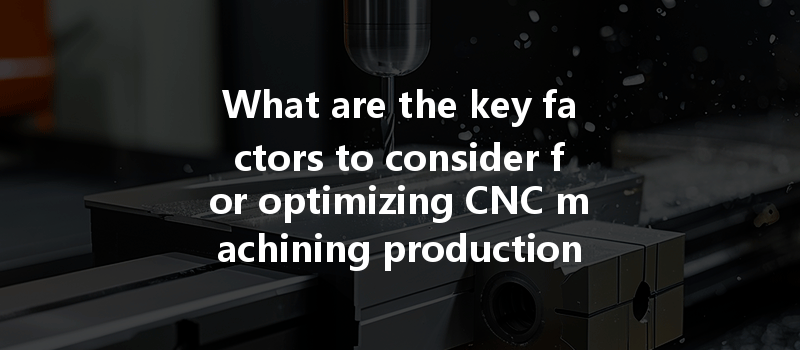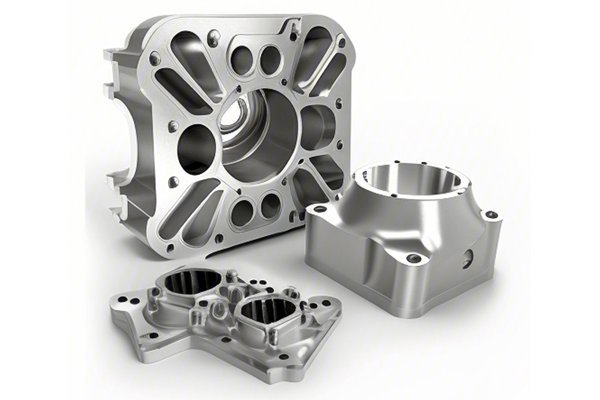In the rapidly evolving landscape of manufacturing, optimizing CNC (Computer Numerical Control) machining processes is crucial for companies striving to achieve competitive advantages. As industries demand higher precision, reduced lead times, and lower production costs, companies like YL Machining must navigate a complex web of factors that influence both production efficiency and machining quality. Whether you’re a manufacturer seeking to enhance your operations or a customer interested in understanding the process better, this comprehensive article delves into the multifaceted aspects of optimizing CNC machining, covering essential techniques, equipment selection, material considerations, and more.
Understanding CNC Machining
CNC machining is a subtractive manufacturing process where computer-controlled machines remove material from a solid block to create parts with specified dimensions. This technology is pivotal in modern manufacturing, enabling the efficient production of complex shapes with high precision. CNC machining is widely used across various sectors, including aerospace, automotive, medical devices, and electronics. Its capability to maintain tight tolerances and repeatability makes it an attractive option for mass production and prototype development alike.
Importance of Optimization
With the increasing demand for high-quality, quick-turnaround products, optimizing CNC machining processes is no longer optional; it is essential. Optimization not only improves production efficiency but also enhances product quality, reduces waste, and lowers operational costs. According to a study by the National Institute of Standards and Technology (NIST), improving manufacturing efficiency can lead to dramatic increases in profitability—up to 20% in some cases.
Key Factors to Optimize CNC Machining
Selecting the right CNC machines is the cornerstone of any successful machining operation. Different machines have distinct capabilities and limitations, and understanding these nuances is vital for optimizing performance.
Types of CNC Machines:
Each type of machine has applications where it excels. By evaluating the specific needs of your production, YL Machining can select the appropriate machines, ultimately boosting efficiency.
The tooling used in CNC machining directly affects both production efficiency and quality. Selecting the right tools involves considering material compatibility, cutting parameters, and tool geometry.
Types of Tooling:
To maximize tool life and minimize downtime, regular maintenance is essential. According to the Machinery’s Handbook, improper tool maintenance can reduce tool lifespan by up to 50%. Implementing a preventive maintenance program can mitigate this risk and enhance tool performance.
The choice of material significantly influences machining efficiency and end-product quality. Material properties such as hardness, machinability, and thermal stability must be considered.
Material Categories:
At YL Machining, we assess the specific requirements of each project to ensure optimal material selection that aligns with performance specifications. For example, aluminum alloys like 6061 showcase excellent machinability, while stainless steel requires more meticulous handling due to its toughness.
The parameters set within the CNC program play a crucial role in determining the overall efficiency and quality of machining processes. Key parameters include:
Optimizing these parameters requires a delicate balance; increasing speed can enhance efficiency but may compromise surface finish quality. According to the Manufacturing Engineering Society, fine-tuning cutting parameters can yield improvements in cycle time by 15-30%.
The integration of automation in CNC machining can significantly improve production efficiency. Automated processes, such as loading and unloading parts and tool changing, reduce the need for manual intervention and increase throughput.
Examples of Automation Solutions:

As noted by the American Society of Mechanical Engineers (ASME), factories that have embraced automation report efficiency gains of up to 50%.
Implementing stringent quality control processes is imperative for maintaining product quality throughout the machining process. Techniques such as Statistical Process Control (SPC) allow manufacturers to monitor production deviations in real time.
Quality Control Techniques:
At YL Machining, we leverage advanced measurement tools such as CMM (Coordinate Measuring Machines) to ensure parts meet tight tolerances, which ultimately reduces the risk of rework or scrap.
The expertise of your workforce can make or break the optimization process. Skilled machinists understand complex programming, tool selection, and troubleshooting operations. Investing in continuous training and education ensures that your team remains knowledgeable about the latest trends, tools, and techniques in the industry.
According to the Fabricators & Manufacturers Association (FMA), companies that provide ongoing training experience a 45% increase in productivity, highlighting the importance of a capable workforce.
Implementing lean manufacturing principles is crucial for eliminating waste and enhancing efficiency in CNC machining operations. Lean methodologies focus on reducing non-value-added activities while maximizing productivity.
Key Lean Techniques:
By adopting lean principles, YL Machining can streamline workflows and minimize lead times.
Establishing real-time monitoring systems enables manufacturers to gather data continuously on machine performance and production metrics. Sensors and IoT (Internet of Things) devices can provide invaluable insights that guide decision-making.
Key Indicators to Monitor:
Using these metrics helps identify areas of improvement, ensuring that CNC machining remains both efficient and capable of delivering high-quality products.
Fostering a culture of continuous improvement is essential for long-term success in CNC machining. Encouraging employees to share feedback, suggest improvements, and participate in problem-solving creates an environment conducive to innovation.
Tools for Continuous Improvement:
Adopting a continuous improvement mindset can lead to incremental changes that cumulatively enhance production efficiency and quality.
Optimizing CNC machining production efficiency and quality requires a holistic approach that encompasses equipment selection, tooling, material considerations, machining parameters, automation, quality control, skilled personnel, lean principles, monitoring systems, and a culture of continuous improvement. At YL Machining, we recognize that each of these factors plays a critical role in our ability to deliver exceptional machining solutions to our clients.
By embracing these principles and continuously evaluating our processes, we ensure that we remain at the forefront of the CNC machining industry, ready to meet the evolving needs of our customers while driving greater efficiency and unparalleled quality in every project. The journey towards optimization is ongoing, but with the right strategies in place, we can achieve remarkable results that benefit not only our company but also our clients and the broader manufacturing landscape.
—
This article outlines key factors necessary for optimizing CNC machining production efficiency and quality, providing a detailed and coherent examination of each aspect integral to the process. Should you require further information or specific insights into CNC machining tailored to your needs, feel free to reach out to YL Machining for expert guidance and consultation.






